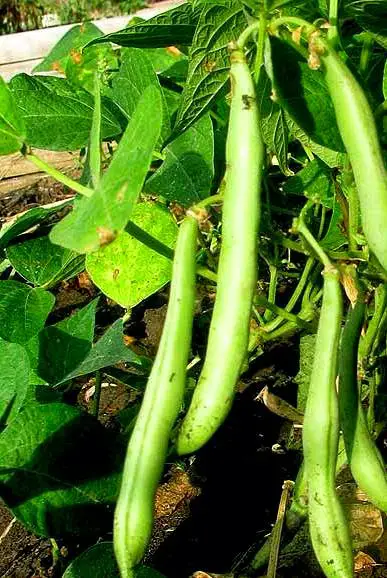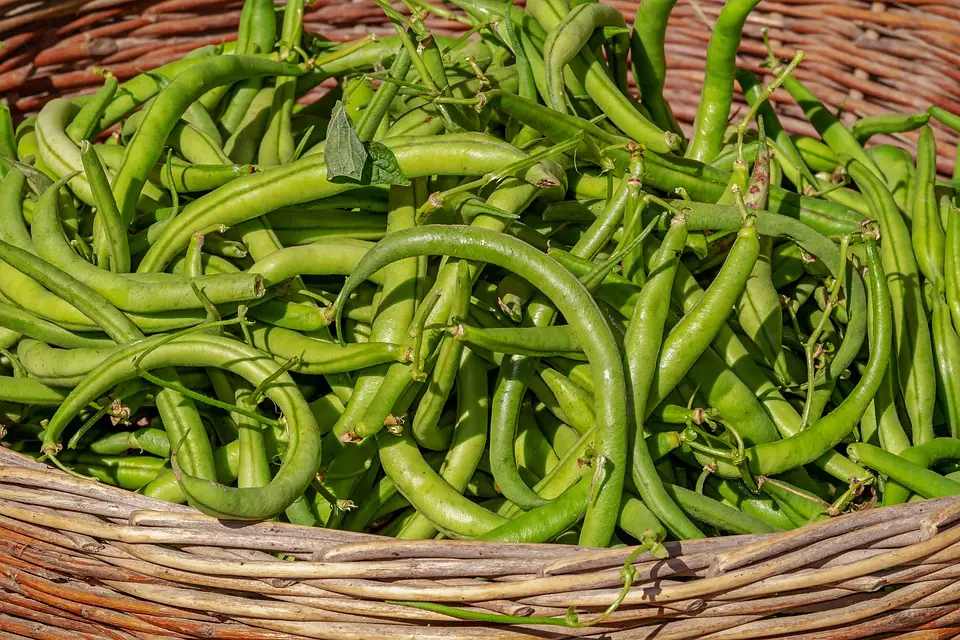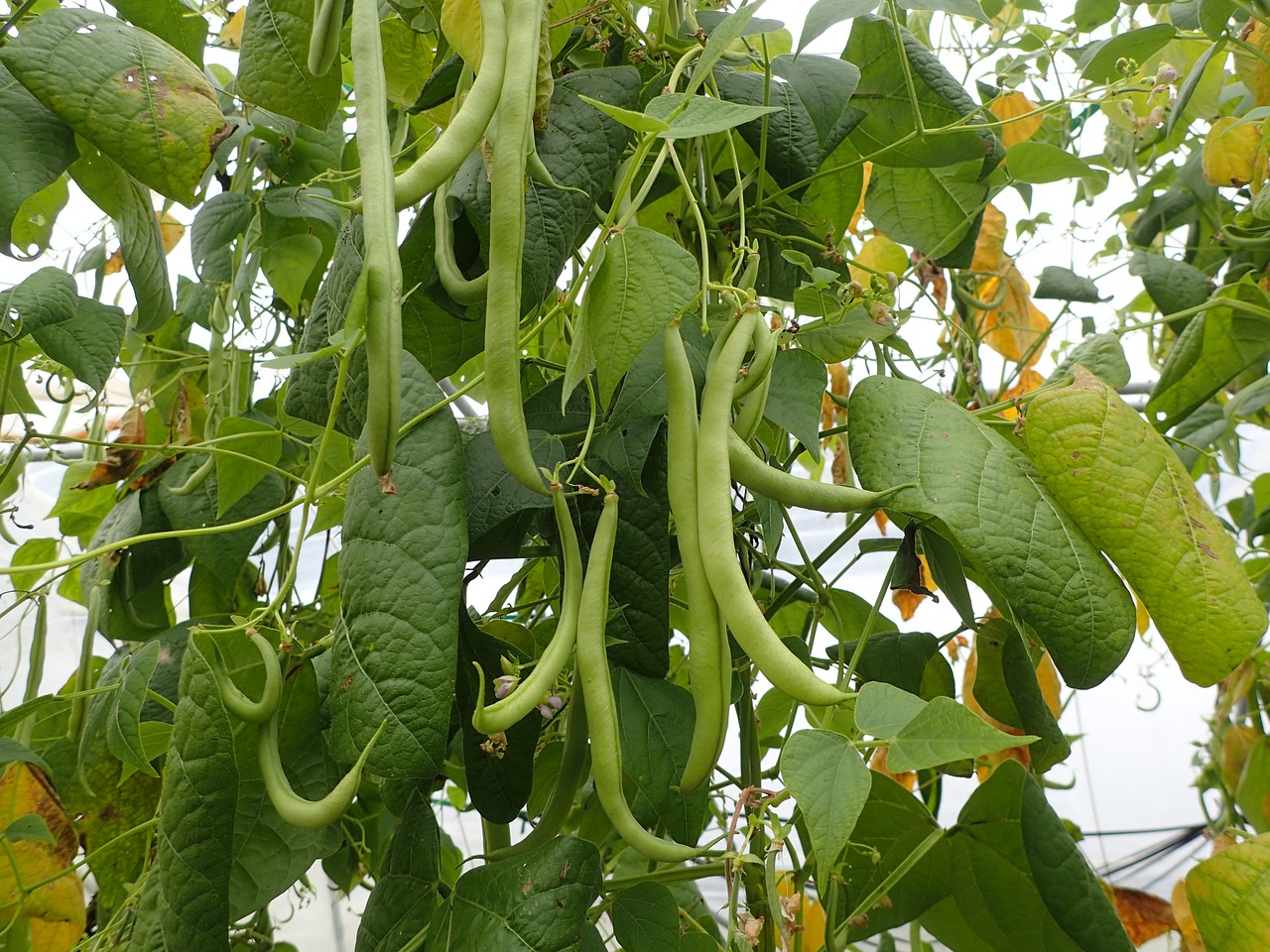We use affiliate links to run our site. When you buy through links on our site, we may earn an affiliate commission, without any added cost to you. Learn more
If you’re looking for a versatile, easy-to-grow crop that will give you plenty of bang for your buck, look no further than the common beans. A staple in cuisines around the world, beans are a nutritional powerhouse, packed with protein, fiber, and essential vitamins and minerals.
Best of all, they’re relatively low-maintenance and can be grown in a wide range of climates. With a little attention, your common bean plants will thrive and produce a bountiful harvest.
Here in this post, we’ll share with you everything you need to know about growing and caring for common beans. We’ll cover topics like planting, watering, fertilizing, and more. By the end of this article, you’ll be an expert on bean care.
So let’s get started…
How to Grow Beans From Seeds:
Beans are one of the easiest vegetables to grow from seed and a great crop for beginning gardeners. You can sow them directly in the garden. They have shallow roots, so they don’t need a deep pot or a lot of soil.
Some of the beans are grown primarily for the seeds whereas others are grown for their pods (green beans). These pods can be served as vegetables. Here in this article, we will use the term “beans” to mean green beans in general.
Planting Beans:
Beans dislike being transplanted. When you transplant a bean plant, the roots are disturbed and the plant can become stressed. This can lead to decreased yields and poor plant health. So always plant bean seeds directly in the ground or in the container.
When to Plant:
If you want your beans to thrive, it’s important to know when to plant them. You don’t want to plant too early and risk frost damage, but you also don’t want to wait too long.
The best time to plant beans is after the danger of frost has passed. This way, your beans will have the best chance to grow and produce a bountiful harvest.
Where to plant Beans:
Make sure you choose the right spot to grow beans. Beans need a site that gets lots of sunlight and has rich soil with good drainage. Raised beds and containers are also good options for planting beans.
How to plant bean seeds:
When planting bean seeds, it is important to ensure that the seeds are entirely covered. Bean seeds are larger than many vegetables, the average size of a bean seed is between 4 and 8 millimeters, and they need to be completely submerged in the soil in order to germinate properly.
Give the plants enough space to grow. The best way to grow beans is to keep at least a 3 to 6 inches gap between two plants, it ensures proper growth.
How to Take Care Of A Bean Plant:
Beans are a great plant to have in your garden because they are easy to take care of. Here are a few tips you should keep in mind:

Light
Being a fruit-producing plant beans love sunlight a lot. Put them in a place where you will receive at least 6 hours of sunlight per day. This is the bare minimum requirement for the plant to produce lots of fruits.
Interestingly, a good amount of sunlight can also reduce the chances of fungal diseases.
Soil:
The key to growing healthy beans is good healthy soil. Loamy soil generally works best with beans as it has a good mix of sand, silt, and clay. This type of soil retains moisture but also drains well, so your beans won’t get too much or too little water.
Good drainage is also important because beans don’t like to sit in wet soil. Mix some coconut coir or perlite along with the soil to increase its water retention and drainage capacity.
Add a generous amount of compost to the soil before planting the seeds. Being a member of the legume family, they will produce their own nitrogen.
Water:
Water deeply, at least once a week. Use mulch, it will preserve moisture and keep the weeds at bay.
Use your fingers to check the dryness of the soil before watering. If it feels dry, then only give your beans a good drink.
Always water the soil and avoid wetting the leaves of the plants. Wet leaves can invite fungal diseases. If you want to know more about how should you water a plant check this post.
Ideal Temperature:
The ideal temperature for growing beans lies around 700 F to 800 F. This allows the bean plants to germinate and grow properly. Anything less than 650 F and you will see a lesser germination rate and may also increase the possibility of rotting.
How to Fertilize a bean plant:
Beans are a member of the legume family of plants, and they are known for their ability to “fix” nitrogen in the soil. So they don’t need as much nitrogen fertilizer as other crops. In fact, too much nitrogen can actually harm your beans.
The best way to fertilize a bean plant is with a fertilizer that has a higher proportion of phosphorus and potassium like this one.
Different bean varieties: Pole variety vs Bush variety
There are two main varieties of beans – pole beans and bush beans.
Pole beans grow on a climbing vine, while bush beans grow on a short, compact plant. Both have their own benefits and drawbacks.
Pole beans are more productive, meaning you’ll get more beans per plant. They also take up less space in the garden, since they grow vertically. The pole variety takes more time to mature, but it produces better yields than the bush variety.
The best thing about the bush variety beans is that they are self-sufficient i.e. they don’t need any outside support. Unless your area is too windy, you don’t need any support for the plant.
If you are planning to grow pole variety then you have no choice but to give them a trellis.
Depending on your variety of beans germination time will differ. Generally, the bush type will germinate within a week whereas for a pole variety it might take a couple of weeks.
When to harvest Beans:

When to harvest different beans can be a tricky question. There are three main types of beans – snap beans, shell beans, and dry beans. Each type of bean has a different method of harvesting.
Snap beans, for example, are best harvested when they are about 4-6 inches long and the pods are still tender. You can easily snap them off with your hands.
For Shell beans, like soybeans, harvest when the pods are matured and the beans are fully developed. Open the pods and remove the beans and store them.
Dry beans such as Kidney beans are only harvested when the pods are fully dry and become brown.
Knowing when to harvest your beans is important for getting the best flavor and texture out of them.
How to Grow Common Beans in Pots
Growing beans in pots is a great way to enjoy fresh, homegrown beans without taking up a lot of space.
Always choose smaller bean varieties for growing in containers, and also give them some type of support structure, such as a trellis or tomato cage.
Choose a pot that is at least 12 inches wide and has drainage holes in the bottom. Fill the pot with a high-quality potting mix and plant the beans according to the package directions.
Water regularly and fertilize every few weeks with a water-soluble fertilizer. Harvest the beans when they are mature and enjoy!
Common Pests and Plant Diseases:
If you’re a gardener, chances are you’ve had to deal with pests and diseases at some point. Beans are no exception. Here are some of the most common pests and diseases that affect beans:
Mexican bean beetles:
Mexican bean beetles are small, oval-shaped insects that are yellow or orange in color. They feed on the leaves of beans and other plants in the legume family.
Spider mites:
These are tiny spider-like creatures that feed on the sap of plants. They can cause damage to leaves and make them turn yellow or brown
Aphids:
Aphids are small, soft-bodied insects that suck plant juices. They can cause stunted growth, deformities, and discoloration of leaves.
Fungal diseases:
Fungi can cause leaf spots, root rot, and stem rot. Fungal diseases such as powdery mildew and anthracnose can also affect bean plants. Powdery mildew appears as a white or gray powder on the leaves of affected plants.
Conclusion:
There are many reasons to grow beans at home. They are easy to grow and don’t require much space. With a little planning and care, you can grow them in containers on your deck or patio.
Beans are a healthy, low-fat food that is high in fiber and protein. They are also a good source of vitamins and minerals. Growing your own beans gives you the freshest, most flavorful beans possible. You can also choose from a wide variety of bean varieties to grow.
Don’t wait any longer, get started today and see the results for yourself. Follow the tips we discussed in this article, and you will be well on your way to success.
I hope this post was helpful to you. Please share it with others also so they can also benefit from growing beans at home.
Amazon and the Amazon logo are trademarks of Amazon.com, Inc, or its affiliates.
